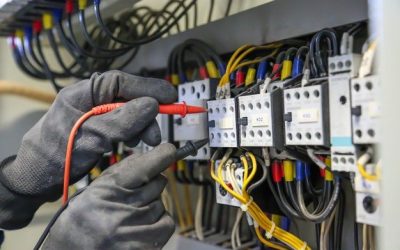What is an Excavator: What Exactly Is an Excavator?
After all, no matter how many expensive, modern pieces of equipment are brought to a project, the fundamental goal will always be to dig up the ground in preparation for construction.
An excavator is one of the most prevalent pieces of equipment on a construction site, and hence one of the most common and desirable sorts of heavy equipment operators in countries like Uganda, Kenya, Rwanda, South Sudan and more.
In this post, we’ll answer the question, “What is an excavator?” look at the many types of excavators, and talk about how to become qualified to work as an excavator operator:
What Exactly Is an Excavator?
The excavator is one of the most recognizable and vital pieces of heavy equipment on a jobsite. Its principal function is to dig up dirt and move it to another location. The excavator usually features a rotating platform on which the cab is mounted, as well as a digging arm on a boom that reaches out and may be used to scoop soil into its bucket.
The most frequent sight at the end of an excavator boom is an earth-moving bucket, but it is not the only one. Excavators can be equipped with a variety of attachments, such as a breaker or hydraulic hammer, for clearing brush or moving rubble.
Modern excavators are almost entirely powered by hydraulics, making them more maneuverable and powerful than previous, wire-operated models.

What Are the Different Excavator Types?
There are three types of excavators that are often used.
Standard excavator: The most popular form of excavator, this heavy machinery typically weighs roughly 40,000 pounds (though it may be considerably larger) and is suitable for a wide range of job locations. Standard excavators can be tracked or wheeled.
Midi excavator: These are excavators that are mid in size. Midi excavators are smaller than normal excavators yet strong enough to function on a variety of job locations. In general, a midi excavator weighs more than 13,000 pounds but less than 22,000 pounds.
Mini excavator: If your jobsite is tiny or otherwise contained and just requires shallow excavation, a mini excavator may be appropriate. These machines weigh less than 13,000 pounds and are ideal for modest demolition operations such as removing stumps from residential property. They may lack the power of their bigger brothers, but they require substantially less operational area.

How to Become an Excavator Operator in Uganda
Even the tiniest excavator is considered as heavy equipment. This implies that in order to operate an excavator safely and legally, you must first be qualified by a recognized training institution. But there is some good news. Once you’ve obtained your certification from your preferred heavy equipment operator school like friendly Heavy Equipment & machinery training School, you’ll be able to find work not just in your own state, but in most others as well.
Maximize your equipment’s maximum capability and production, beginning with your operator. Friendly Heavy Equipment and Machinery Training School can educate your drivers to use any tool for any machine type or model.
So the question isn’t, “What is an excavator?” You should ask yourself, “How do I get certified to operate all types of excavators?” If you live in Uganda, South Sudan, Kenya or Rwanda,
The answer is Friendly Heavy Equipment and Machinery Training, where you can learn to operate various varieties of excavators as well as other heavy equipment. To learn more, please contact us right now.




